- Free admission
- Adaptive Pragmatic (ADA)
Felsenmeer Hemer natural treasures
Diverse nature experiences
Bizarre rock formations and gorges in the middle of ancient Buchenwald forests were, according to legend, the realm of the dwarves in ancient times.
Address
Felsenmeer Hemer natural treasures
Deilinghofer Str. 71
58675 Hemer
Properties:
A sea of coral
Around 380 million years ago, a coral reef formed in tropical waters on what is now Hemer's eastern edge. This later developed into a rocky mass of limestone that stretches from Wuppertal via Hagen to Hemer and Balve.
Our ancestors have been mining iron ore in the area that is now the Felsenmeer nature reserve since the ninth century. This makes it one of the oldest iron ore mining areas in Westfalen. Over a length of around 700 meters and a width of up to 200 meters, there are limestone blocks layered on top of each other like towers and waves. Numerous caves and impressive cave-ins more than ten meters deep give the Felsenmeer an additional wild and romantic character. Today, the actual Felsenmeer is largely covered by woodruff Buchenwald. The trees, which are up to 250 years old, have a high proportion of dead wood and are a valuable habitat for woodpeckers and bats in particular. For safety reasons, there is a strict no-passing rule. Many thousands of locals and tourists come here every year. The fact that the Felsenmeer has been awarded "National Geotope" status in addition to its status as a nature reserve adds to its appeal. The Felsenmeer can be visited free of charge all year round.
Of Zorro and flying goblins
The melodic song of the wood warbler can often be heard in spring. The knocking and calling of the gray and green woodpecker can also be heard in the Buchenwald. The green woodpecker is Bird of the Year 2014 and its laughing call resounds strikingly brightly through the forest in the Felsenmeer. But the green woodpecker is not as harmlessly funny to its prey as it calls. Its Zorro-like appearance - red crown, black eye mask, colorful green plumage - has its justification: He likes to go hunting and has a preference for ants. You can observe it well in the orchards around the Felsenmeer. With its long, sword-like tongue, it fishes its favorite food out of the ground at lightning speed. As a ground woodpecker, it is more likely to be seen in the meadows than in the trees. Its green plumage camouflages it perfectly here too.
The calcareous subsoil ensures that the Buchenwalds in the area can boast stately individual trees and also leads to a rich occurrence of herbaceous plants: sanicle, bird's-nest-wort and arum are just some of the comparatively common plants here. In contrast, these plants hardly thrive on acidic soils such as those found in Südwestfalen.
At dusk in the warm season, flying goblins become active in the Felsenmeer: the greater noctule bat, water bat, greater mouse-eared bat and lesser whiskered bat are just a few of them. The "Green Classroom" at Sauerlandpark Hemer offers guided tours with ultrasound detectors.
Contact : Nature Conservation Center Märkischer Kreis e. V.
Around 380 million years ago, a coral reef formed in tropical waters on what is now Hemer's eastern edge. This later developed into a rocky mass of limestone that stretches from Wuppertal via Hagen to Hemer and Balve.
Our ancestors have been mining iron ore in the area that is now the Felsenmeer nature reserve since the ninth century. This makes it one of the oldest iron ore mining areas in Westfalen. Over a length of around 700 meters and a width of up to 200 meters, there are limestone blocks layered on top of each other like towers and waves. Numerous caves and impressive cave-ins more than ten meters deep give the Felsenmeer an additional wild and romantic character. Today, the actual Felsenmeer is largely covered by woodruff Buchenwald. The trees, which are up to 250 years old, have a high proportion of dead wood and are a valuable habitat for woodpeckers and bats in particular. For safety reasons, there is a strict no-passing rule. Many thousands of locals and tourists come here every year. The fact that the Felsenmeer has been awarded "National Geotope" status in addition to its status as a nature reserve adds to its appeal. The Felsenmeer can be visited free of charge all year round.
Of Zorro and flying goblins
The melodic song of the wood warbler can often be heard in spring. The knocking and calling of the gray and green woodpecker can also be heard in the Buchenwald. The green woodpecker is Bird of the Year 2014 and its laughing call resounds strikingly brightly through the forest in the Felsenmeer. But the green woodpecker is not as harmlessly funny to its prey as it calls. Its Zorro-like appearance - red crown, black eye mask, colorful green plumage - has its justification: He likes to go hunting and has a preference for ants. You can observe it well in the orchards around the Felsenmeer. With its long, sword-like tongue, it fishes its favorite food out of the ground at lightning speed. As a ground woodpecker, it is more likely to be seen in the meadows than in the trees. Its green plumage camouflages it perfectly here too.
The calcareous subsoil ensures that the Buchenwalds in the area can boast stately individual trees and also leads to a rich occurrence of herbaceous plants: sanicle, bird's-nest-wort and arum are just some of the comparatively common plants here. In contrast, these plants hardly thrive on acidic soils such as those found in Südwestfalen.
At dusk in the warm season, flying goblins become active in the Felsenmeer: the greater noctule bat, water bat, greater mouse-eared bat and lesser whiskered bat are just a few of them. The "Green Classroom" at Sauerlandpark Hemer offers guided tours with ultrasound detectors.
Contact : Nature Conservation Center Märkischer Kreis e. V.


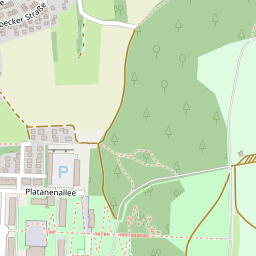

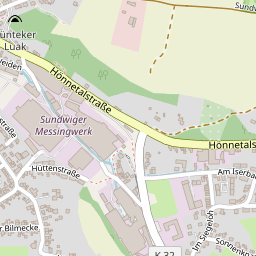

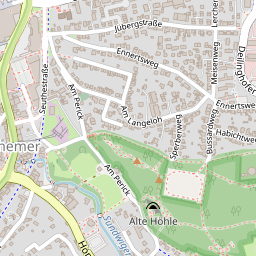





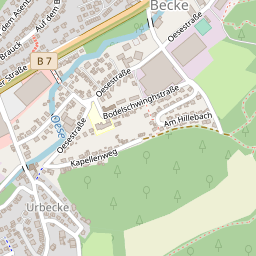

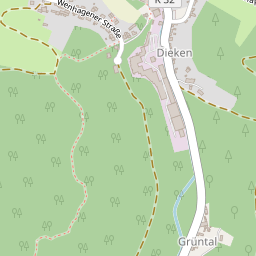











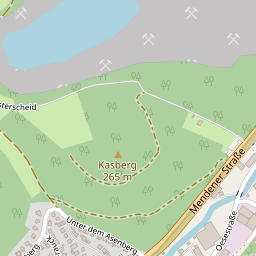


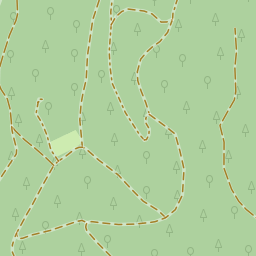


















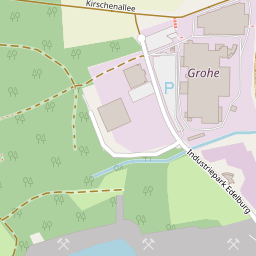





























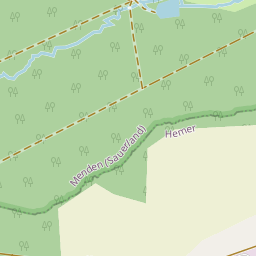

































































































Leaflet © OpenStreetMap contributors

